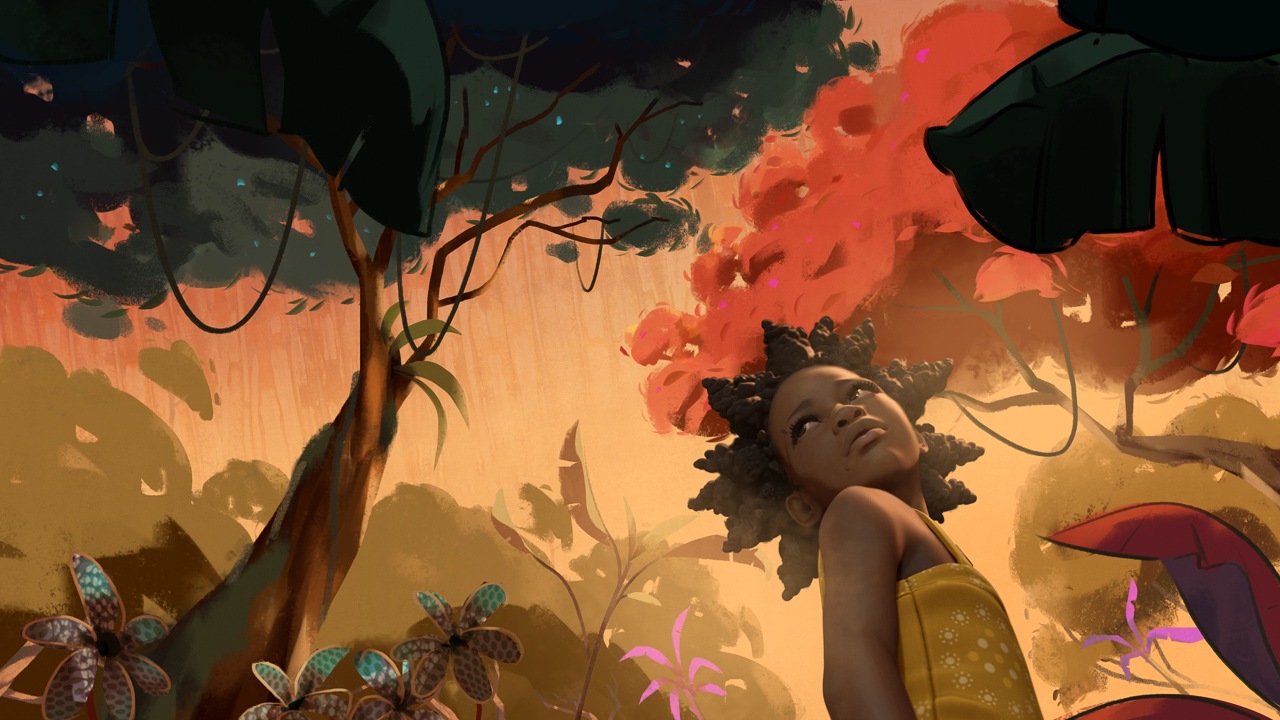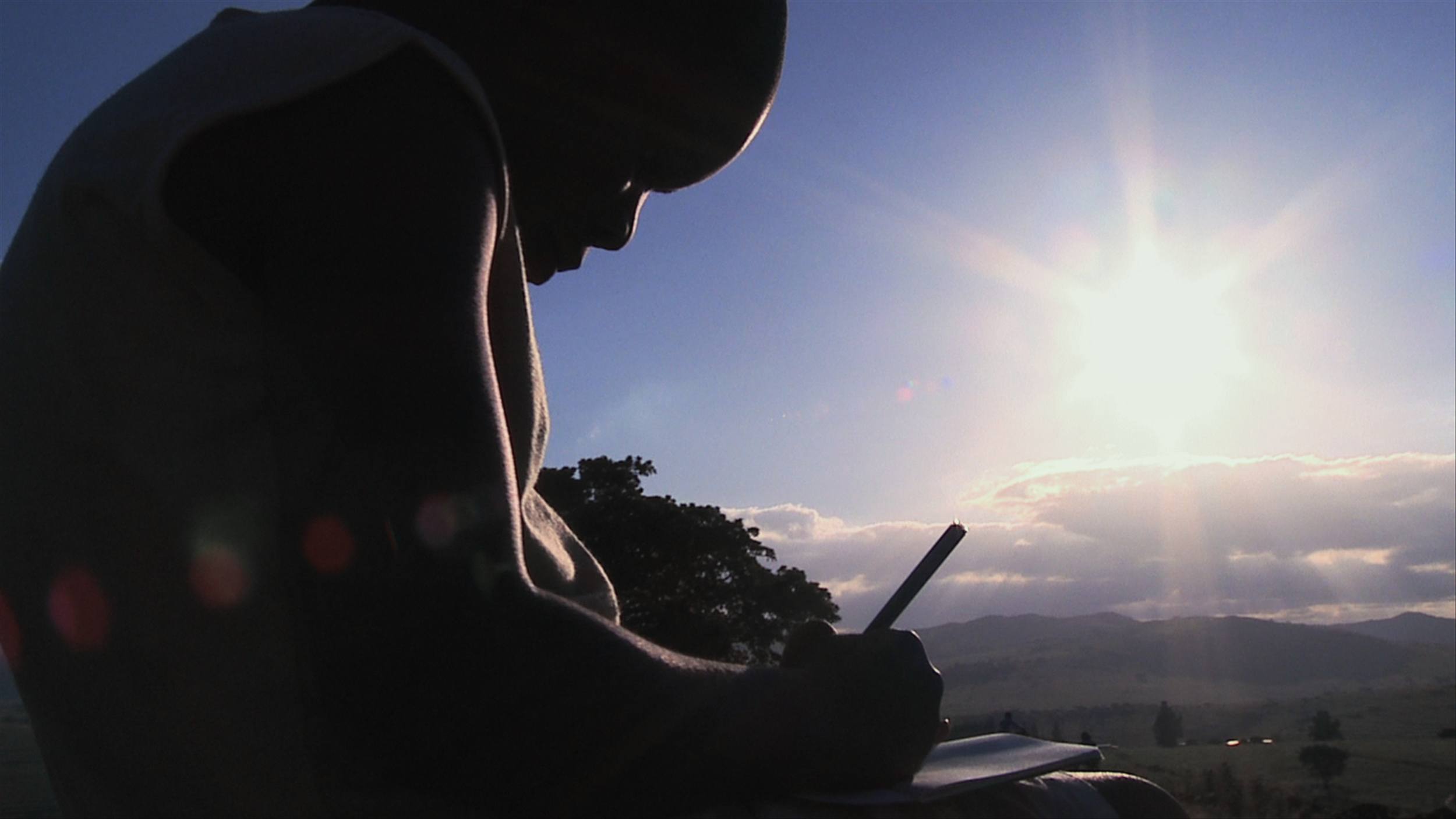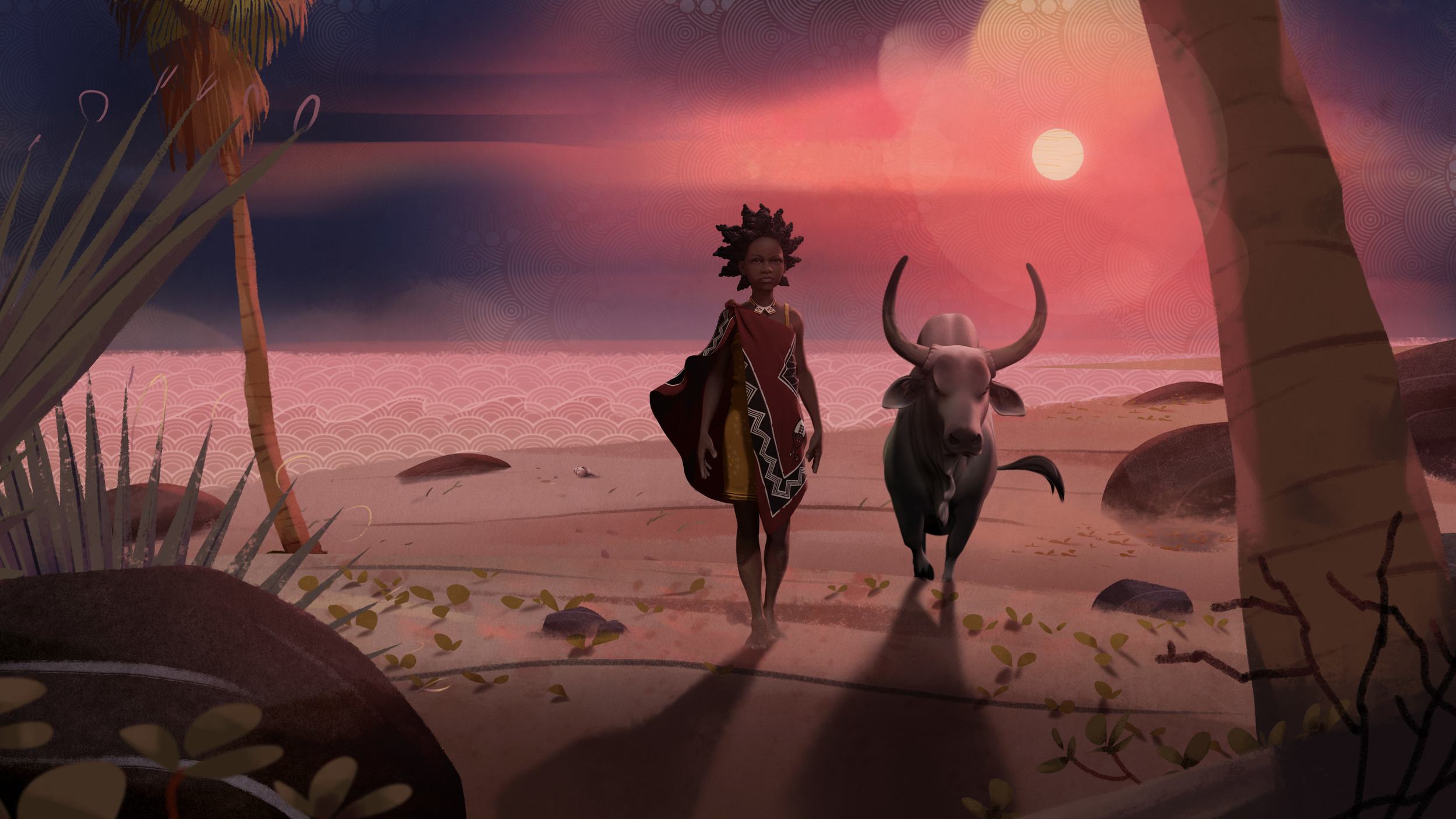You may have missed Liyana, a documentary that blends animated artwork and live action, and its impressive film festival run. I certainly did. Fortunately for all of us, films like this one have a lifespan born in word of mouth that, while it may take some time, will inevitably hit your ears when you’re ready for it. For this writer, Liyana caught my attention after returning to New York to play at one of my favorites, the Museum of the Moving Image. And now it’s only proper that I write this review from Africa, where I see the faces of the five young storytellers in each smiling child I see. Like I said, these films have a way of finding you late but also right on time.
Liyana is set in an orphanage in Swaziland where five children are led by South African storyteller, Gcina Mhlophe, to create a story of their own. A Russian doll of a movie, the story of Liyana becomes their movie — complete with animated artwork — inside a documentary. Theirs is about a girl they named Liyana who lives in a small home made of sticks and mud, along with her small family. The children then collaboratively add pieces to her story as viewers watch it play out like a comic book, panel by beautiful panel. The young girl quickly becomes an outlet for their personal experiences with alcoholism, abuse, neglect, disease, and violence. The children are told in the beginning that this is their story, that they choose how it will end, and the fictional story of Liyana is quickly juxtaposed against the documented lives of the orphan storytellers and the real-life events that shape their collective childhoods.
It’s that collective experience that carries the emotional heft of Liyana as she becomes a kaleidoscopic mirror of the storytellers’ experiences with challenges that make them unsafe. It’s hard to wrap your head around the trauma these kids have known, but as their story goes on you get an unsettling idea of its depth, one you will feel in the pit of your stomach as the children narrate. With a short runtime of just over an hour and told by children, you may expect the story itself to be simplistic, and in some ways it is. In other ways though, they will surprise you with their ability to braid their themes into their stories, and with the help of documentarians Aaron and Amanda Kopp those themes land on their target, simplistic or not.
As for the character herself, Liyana’s journey is more reactive than active as most plot points are external factors propelling themselves on her, an unfortunate reflection of the children’s lives themselves. And like the children themselves, the one thing they can control is the choice to keep going, to hold onto hope. That’s the message Liyana’s grandmother gives her through the children who have internalized the message. What makes Liyana so interesting is not the story itself — although it has more than its share of moments — but what each step of the tale says about the people telling it. It’s a confessional, a therapy session, a veiled means of healing through the fundamental purpose of storytelling: to make a connection. You will be right there, cheering for Liyana and her bull, begging the kids for it to turn out well because then, by proxy, you can believe it will turn out well for them, too.
The children are told in the beginning that this is their story, that they choose how it will end. Little do you understand at the time how this piece of knowledge is a warning for the viewer, too. And by the film’s climax you will feel the weight of that ending and what it might mean for each of the participants who informed their tale.
My experience with the film is no doubt molded by my personal experience being in Africa as I watched it, but you would have to be dead inside for this film not to activate the part of your heart where you cling strongest for hope. “Liyana was strong,” a young girl says of the character and story she helped create. “I’m also strong,” she continues. “I want to write a nice story of my life. I’m going to write it myself. It’s not going to be easy, but it’s going to be an adventure.”
Shout out to the five children who created this story as a message of hope to themselves and an encouragement to others. Aaron and Amanda Kopp does wonderfully in using these children’s voices as an instrument to relay it, along with beautiful artwork to engage the viewer, and a soundtrack that flawlessly guides the tone of the film with African beats that conduct your emotions like a choir director. Liyana brings it home both figurative and literal, and you would be smart seize the opportunity to see this one when you have the chance.
Want to get Black Nerd Problems updates sent directly to you? Sign up here!
Follow us on Twitter, Facebook,Instagram, Tumblr, YouTube and Google+.





Show Comments